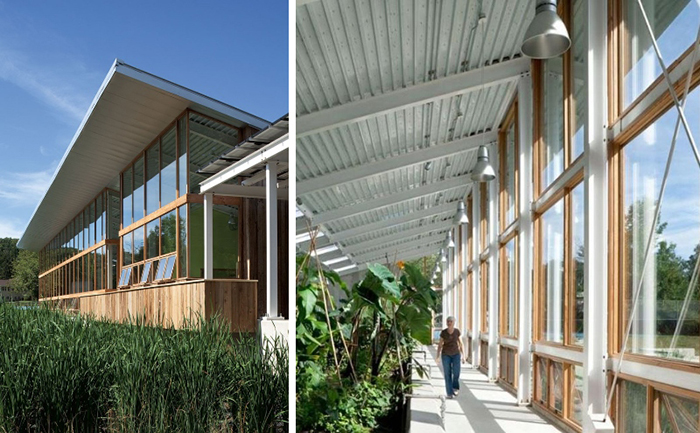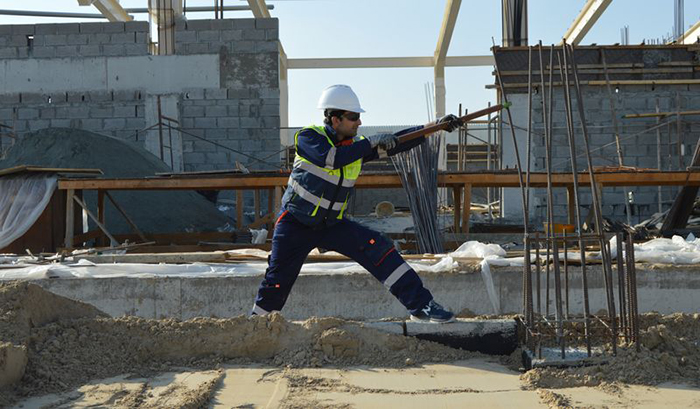PABLO GARCÍA-RUBIO | Tungsteno
In 2007, three visionary designers at MIT considered what the sustainable home of the future might look like, a space that would not only respect the environment but also form part of it. Out of that thinking came the Fab Tree Hab project, a prototype ecological home that from conception to construction was conceived as a "living home." The outer walls would be made of trees that would grow around recyclable wooden scaffolding that would shape the structure and later be removed. The interior walls would be made of clay and organic plaster. In addition to using rainwater, the waste would be treated to generate as little as possible.
This project was conceived as an experiment. But while it did not take into account its feasibility or realism, it does raise a number of issues that building design must address in order to minimise negative impacts and even generate positive effects for its inhabitants and the community in which they live. What if the ultimate goal of sustainable design was to construct buildings that were conceived holistically as living entities rather than passive things?
Circular economy and bio-inspiration
Sustainability has become one of the central themes of 21st century architecture. For decades, solutions have been incorporated into many buildings to improve aspects such as energy efficiency, the use of materials or their urban impact. To go one step further, architect Jason McLennan created the Living Building Challenge (LBC), a standard for designing buildings that are designed from start to finish with sustainable parameters and that function in a similar way to structures in nature.
In the same way that the concept of the circular economy aims to minimise the impact of our actions on the environment, philosophies such as those involved in this certification aim to apply similar concepts to the construction of spaces. The aim is to put ecology at the heart of design and make it function in the same way as a living organism.
Biologist Ignasi Cubiñá explains that the linear model on which construction is based involving the "extraction of resources, production and use of products and final disposal in the form of waste is not in harmony with nature because nature does not work like that. Nature does not generate waste," he says.
For a building to achieve the distinction of living building according to the LBC, it needs to achieve seven "petals" or performance categories. Among them are those related to the management of water and energy, the selection of the space and building site, the positive impact it has on the community where it is built and even the ability to generate a health benefit for its inhabitants or users.
In other words, the living building concept aims to go beyond achieving greater energy efficiency or a reduction in emissions. It also seeks to "lead and support the transformation towards socially just, culturally rich and ecologically restorative communities", according to the organisation's manifesto.

The Omega Center is a wastewater treatment facility that also serves as an educational centre for ecology. Credit: Omega.
Among the buildings that have achieved the highest level of LBC certification is the Omega Center for Sustainable Living, a wastewater treatment facility in the watershed of the Hudson River in New York. The building was constructed using reclaimed or recycled materials. It is self-sufficient in energy and water, uses only natural resources for its filtration processes and employs bioclimatic techniques to take maximum advantage of elements such as sunlight and ventilation. It also serves as an educational centre for ecology and sustainability.
A challenge for the construction sector, one of the most polluting industries
The standards involved in this certification may seem challenging because the way in which construction has been carried out for decades has favoured other criteria over sustainability, which means that building today with sustainability as a priority entails extra costs and time. However, things have now evolved to such an extent that the construction of buildings conceived as "living" elements able to generate positive impacts on society is becoming increasingly accessible as the benefits over the entire lifespan of the building far outweigh the initial drawbacks.
"Being able to ensure that our cities are built according to these criteria is the big challenge of the architecture of the future, the great goal to which we must aspire," says Arancha Calvo, an architect at the Aragon College of Architects. "It is important that all the agents are involved in the process, from the users themselves—or, in general, society itself—to the architects, designers, builders and planners."

The construction sector faces the challenge of reducing its environmental impact. Credit: Unsplash.
In this regard, according to Calvo, biotechnology can be a great ally for the development of solutions that transfer life and autonomy to a structure so that it can reach a state of symbiosis with its environment and its users. Organic materials such as mycelium, a substance generated by some fungi in the form of filaments, can be used for construction thanks to its strength and rapid growth. NASA is experimenting with this material as a sustainable element with which to build structures for future space missions because, according to its own research, it is a component that can grow and self-repair.
Other technologies such as self-repairing concrete, windows that "breathe" without the need to open them or the use of microalgae are examples of how nature can serve not only as an inspiration but also as a tool to provide buildings with extraordinary properties with one objective: to make urban complexes a network of structures with the minimum environmental impact, capable of supplying themselves autonomously and living in harmony with the environment and with their own users in an organic and evolving way, in the same way as the trees of a forest or the corals of a reef.
· — —
Tungsteno is a journalism laboratory to scan the essence of innovation. Devised by Materia Publicaciones Científicas for Sacyr’s blog.
